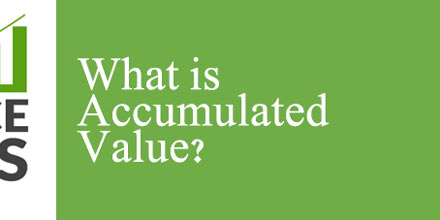
Understanding tax regulations, particularly concerning retirement income, can feel daunting due to their complexity. One key concept to grasp is provisional income. This measure determines how much of your Social Security benefits are subject to federal income tax. Knowing how provisional income works and how to calculate it can help you plan your finances better and potentially save on taxes.
What is Provisional Income?
Provisional income is a term used by the IRS to determine whether Social Security benefits are taxable and, if so, how much of those benefits will be subject to tax. It's essentially a calculation that combines several sources of income to figure out your total income for tax purposes.
Provisional income, used by the IRS to determine the taxability of Social Security benefits, consists of three main components. First, it includes your gross income, encompassing all taxable earnings like wages, dividends, and rental income. Second, any tax-exempt interest, such as earnings from municipal bonds, is added to this total. Lastly, half of your annual Social Security benefits are included in the calculation. Together, these components form your provisional income, and they help determine if and how much of your Social Security benefits are taxable under federal income tax.
Calculating Provisional Income
To calculate your provisional income, you need to follow a few steps:
- Determine Gross Income: This includes all sources of taxable income such as wages, self-employment income, dividends, and pensions.
- Add Tax-Exempt Interest: Include any interest from tax-exempt bonds or other similar investments.
- Include Half of Social Security Benefits: Take 50% of the total Social Security benefits you receive.
For example, if you receive $30,000 in wages, $5,000 in tax-exempt interest, and $20,000 in Social Security benefits, your provisional income calculation would include adding your gross income of $30,000, your tax-exempt interest of $5,000, and 50% of your Social Security benefits, which is $10,000. This results in a provisional income total of $45,000.
How to Calculate Taxes on Your Provisional Income
Calculating taxes on your provisional income involves understanding and applying specific IRS thresholds to determine the taxable portion of your Social Security benefits. Here's a detailed guide on how to proceed:
Step 1: Calculate Your Provisional Income
First, compute your provisional income by adding together your gross income, any tax-exempt interest, and half of your Social Security benefits. This has been detailed earlier, but to summarize, if your gross income is $55,000, tax-exempt interest is $3,000, and Social Security benefits are $20,000, your provisional income would be $68,000.
Step 2: Determine Your Filing Status

Your filing status influences the thresholds at which your Social Security benefits become taxable. The IRS has set different base amounts depending on whether you file as a single filer, married filing jointly, or another status. For the 2023 tax year, the base amounts are $25,000 for single filers and $32,000 for married couples filing jointly.
Step 3: Compare Provisional Income to IRS Thresholds
First, compare your provisional income to the IRS thresholds based on your filing status For single filers, Social Security benefits are not taxable if your provisional income is under $25,000. If your income is between $25,000 and $34,000, up to 50% of your benefits may be taxable. If your income is over $34,000, up to 85% of your benefits may be taxable.
For married couples filing jointly, if your income is below $32,000, none of your benefits are taxable. If your income is between $32,000 and $44,000, up to 50% of your benefits may be taxable. If your income exceeds $44,000, up to 85% of your benefits may be taxable.
Step 4: Calculate the Taxable Portion
To determine the exact taxable portion of your Social Security benefits:
First, subtract the base amount for your filing status from your provisional income and multiply the result by 50%. For example, if you are a single filer with a provisional income of $40,000, subtract the base amount of $25,000 to get $15,000, then multiply this by 50%, resulting in $7,500.
Next, calculate the amount based on the 85% threshold. Subtract the higher threshold of $34,000 from your provisional income to get $6,000, then multiply this by 85%, resulting in $5,100.
Finally, add this $5,100 to the lesser of 50% of your benefits or the initial taxable amount ($7,500). Since 50% of your $20,000 benefits is $10,000 (which is higher than $7,500), you use $7,500. Therefore, adding $5,100 to $7,500 gives you $12,600.
Thus, $12,600 of your Social Security benefits would be taxable.
Benefits and Drawbacks of Provisional Income
Understanding the advantages and disadvantages of provisional income is key to effective financial management, particularly during retirement. Here's a look at both sides of the coin.
Benefits of Provisional Income
Tax Planning: Knowing your provisional income helps in strategic tax planning, potentially reducing tax liabilities by managing your income streams effectively.
Informed Financial Decisions: Awareness of your provisional income helps you make better financial decisions, such as the timing of Social Security benefits and investment income management.
Potential for Tax-Free Benefits: Keeping provisional income below certain thresholds allows for tax-free Social Security benefits, maximizing their value for lower-income individuals.

Drawbacks of Provisional Income
Complexity: Calculating provisional income can be complicated due to various income sources, making it difficult without professional assistance.
Higher Tax Liability: Higher provisional income can lead to a larger portion of Social Security benefits being taxed, increasing the overall tax burden.
Impact on Financial Planning: Managing provisional income can restrict financial planning decisions, such as the timing and amount of retirement account withdrawals.
Unpredictability: Changes in income, investments, or tax laws can unpredictably affect your provisional income, complicating long-term planning.
Conclusion
Provisional income plays a crucial role in determining the taxability of your Social Security benefits. By understanding how it is calculated and the thresholds involved, you can better plan your retirement and optimize your tax situation. Proper management of your income sources, careful planning, and consulting with a tax professional can help you navigate these complexities and potentially reduce your tax burden.











